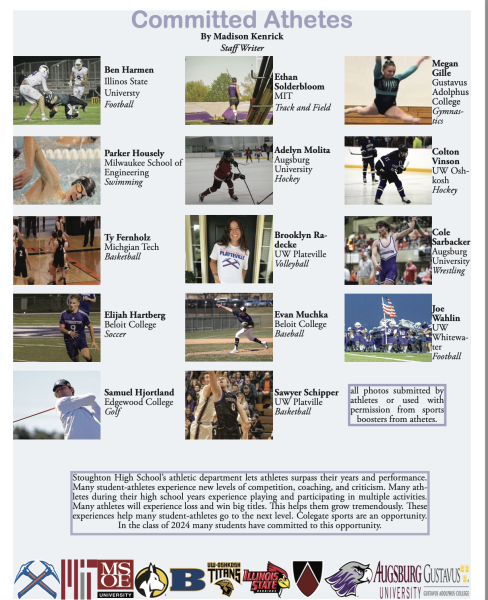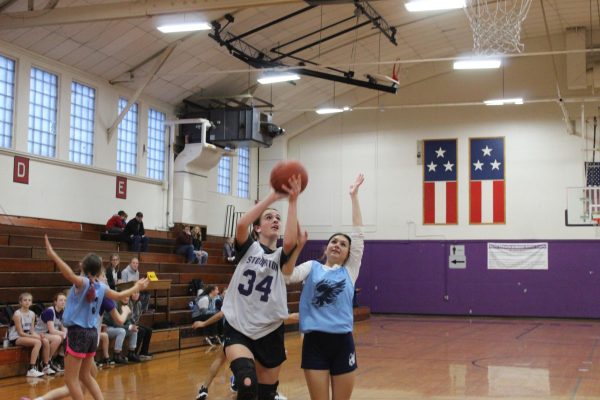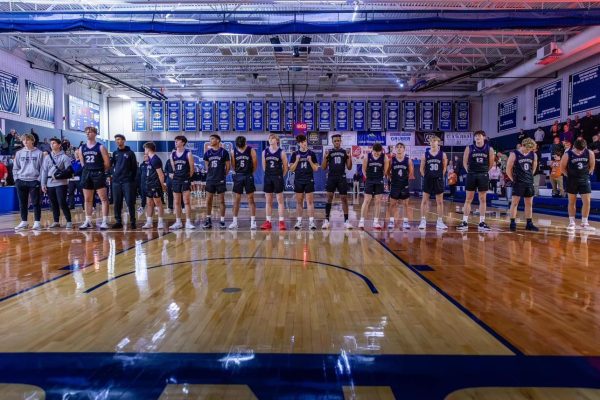SHS Offers Life-Saving Course
photo submitted by elise carter
Elise Carter (12) takes a selfie with Sydney Schipper during a mutual shift at Troll Beach.
According to the United States Lifesaving Association, the chance of death by drowning at a beach staffed by a lifeguard is less than one in 18 million. Odds of winning the lottery come in at about one in 14 million. Being hit by lightning is closer to a one in 500,000 chance. It’s even more common to be a left-handed person whose cause of death was a right-handed product than it is to drown in the presence of a lifeguard. While many individuals may see lifeguards as fun-squashing rule enforcers, it’s not often that one steps back and thinks about just how vital a role these red-suited watchers play.
Stoughton High School offers a unique opportunity that many students may not know about: a lifeguarding course for both physical education credits and an American Red Cross certification in lifeguarding, first aid, CPR, and AED use.
Kate Maloney, a physical education teacher at SHS, facilitates this course and is very passionate about what it can offer to students.
“[My favorite thing about teaching this course is] watching students’ confidence grow. Learning to help keep others safe around water is empowering. In addition, students are forced to find their voice. They learn to communicate effectively and efficiently,” Maloney says.
One student who can attest to the virtues of taking this semester-long class is Elise Carter, a senior who took the course in her sophomore year and has been lifeguarding ever since.
“This was definitely one of the best classes I’ve ever taken at school [and one of the] most useful,” Carter says. “I think everything you learn, you need.”
While sitting out in the sun for hours and telling kids not to run on the deck might seem like a fun, easy way to make a few bucks, both Carter and Maloney note that lifeguarding is not a job for the faint of heart.
“In order to be a successful lifeguard, a person must be confident, observant, decisive, resilient and physically fit,” Maloney says.
According to Carter, Maloney makes sure to emphasize this point at the beginning of the lifeguarding course, leaving no room for misunderstanding.
“On the first day, Ms. Maloney said, ‘This is not a job to get tan and be outside […] You’re going to have to deal with people in serious harm’s way, and you should feel a level of anxiety all the time when you’re working.’ She made it utterly clear you need to see the worst in every situation. You need to be attentive,” Carter says.
Being observant, decisive, and physically strong are not the only skills needed to do this line of work. While one can memorize technical skills and strengthen their water fitness and endurance, another major skill necessary for lifeguarding is effective communication.
“Students are challenged to find their voice as they will need to communicate early and often when on the lifeguard stand. We play Catch Phrase once a week to work on communicating under pressure,” Maloney says.
The activities done in this first-hour class are diverse and cover a wide range of skills needed to receive certification, extending past water endurance.
“We had pool days, two to three days a week [where] we were doing in-water saves, in-water practice […] and then we would do notes on opposite days,” Carter says. “[Notes would mean] we go over procedures of CPR, what to do if someone’s having a stroke, what to do if someone’s bleeding or something happens in the pool, you know, that kind of thing.”
The expectations implemented for the course are consistent with the seriousness of the job. Students can not put minimal effort into the course and expect it to work out in their favor. Not only must they complete a pretest to prove they have adequate water fitness, enrolled students must also continue to meet expectations throughout the course to maintain eligibility for certification.
“The course requires daily engagement […] If a student is absent more than ten times, they lose the ability to earn certification. They are still able to get physical education credit, but the American Red Cross issues an automatic fail if a student is habitually absent,” Maloney explains.
Additionally, she says, “students must earn [an] 80% on all knowledge and skills tests to get certified.”
The requirements and expectations may feel like a lot of pressure, but it’s undeniable that lifeguarding is a rewarding experience.
“It does help, coming home and realizing people need me. If I wasn’t at work, people wouldn’t get what they need,” Carter says.
Carter touches on an important point: lifeguarding can be high stress, but that’s because it’s a job that involves helping people every day, and because of this, one can be sure that what they’re doing matters.
Carter encourages people to consider the course even if they aren’t on the swim team, are unsure of their abilities, or don’t love the idea of a first-hour swim class.
“Ms. Maloney was just the energy I wanted to be around every morning […] She kept things fun [but also] very concise, very clear,” Carter says. “I really recommend people to [take this class]. There’s such a shortage [of lifeguards] and it really is fulfilling.”

Clare Borchardt is the Norse Star's Copy Editor as well as a staff writer. Clare appreciates how the Norse Star is student-led and the amount of collaboration...










